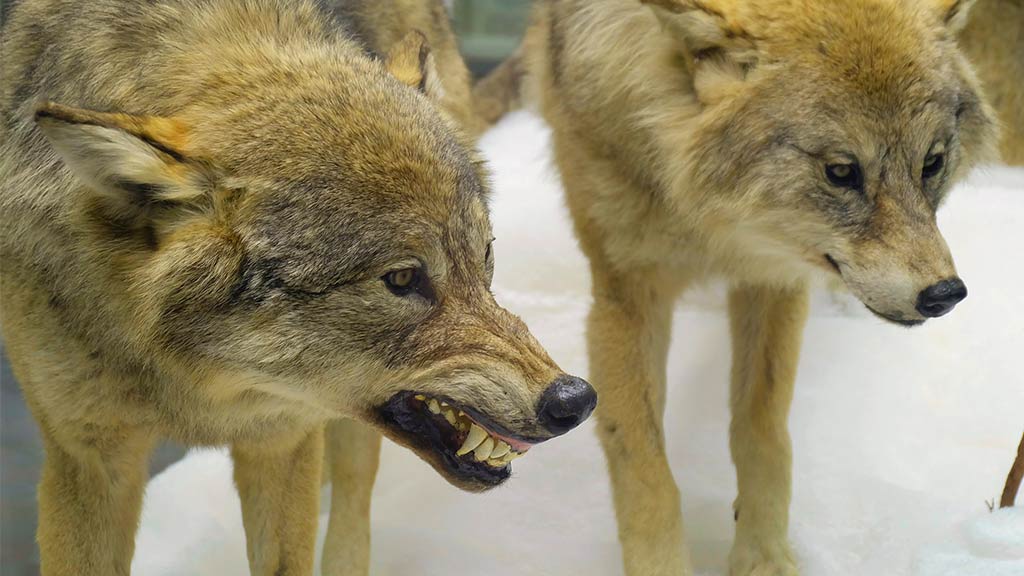Domestication Was Likely Purposeful
For those believing that dogs were first domesticated because ancient humans thought they were cute, think again. Dogs were domesticated by different groups of humans in different regions of the globe. This suggests that dogs were bringing more to the table than their good looks. There was likely something that dogs did for humans that helped them to survive. Theories of wild dogs’ domestication target Western Europe, Siberia, the Middle East, and East Asia as likely areas where the partnership between dog and man first began.
Dogs Weren’t a Strain On Resources
It’s likely that if wolves or ancestral dogs lived as scavengers on the perimeters of human encampments, they weren’t a threat to the food resources of the humans. Dogs can live on a very lean diet of animal protein and it is believed that humans had a surplus of animal meat when they made kills. Dogs could be fed the scraps of fat, meat, and bones that humans wouldn’t or couldn’t consume without compromising the food supply of any of the those living in the encampment.
Dogs Can Fetch
Dog’s instinct to fetch must have been great fuel for the greedy imaginations of humans who were always plotting new ways to hunt more successfully. Modern day wolves naturally exhibit a one-sided version of fetch every time that they kill prey and carry it back to their pack and den. Is it possible that some Paleolithic man in the distant past threw a bone into the surrounding forest, and then looked on in wonderment as a young, wolf pup, lurking in the shadows, brought it back? Is it possible that different species of humans around the world noticed dogs’ ability to fetch and recognized its value in helping them to hunt?
Dogs Are Protective

Dogs Can Understand Non-verbal Cues
When dogs understand that humans are a source for food, praise, and play, they watch them intently for any sign that they are about to be rewarded. Dogs can recognize sound cues, hand gestures, and even eye movement
Dogs Are Strong
Before the arrival of the horse, brought to North America in the 16th Century by the Spanish, Native Americans used dogs as their work animals. At an early age, dogs were trained to pull sleds, known as travois, that could be loaded with as much as 40 pounds of firewood, game, or possessions. Large Native American tribes were known to have thousands of dogs living amongst them and helping them to work and hunt.
Dogs And Humans Think Alike
Dog’s predatory minds think a lot like the minds of humans. Both species rely on cooperation inside the pack, non-verbal cues, stealth and surprise when hunting prey. It’s likely that primative dogs, just like their modern day equivalents, were eager to follow their masters along on a hunt and that the two naturally understood the non-verbal signs they were exhibiting while hunting since the cues came so naturally to both species.
Perfect Partnership
Dogs and humans made a great team. Dogs could instinctually work together in packs to chase large animals and exhaust them. They had a keener sense of smell for tracking and could run faster and for a longer duration than humans. Men, on the other side could go in for the more dangerous kill, but because they were armed with primitive weapons, weren’t as likely to get injured by the prey.
Dogs Are a Reserve Source Of Food
It’s disgusting for us to think of it, but having domesticated dogs on hand meant that in lean times, dogs could be killed and eaten. Despite their very close relationship with their dogs, Native Americans sometimes ate their dogs during special ceremonies or in times of famine.
Conclusion
Dogs keen observation of humans, and their natural instinct to fetch, protect, and understand human cues made them obvious allies to humans. Some believe that without the domestication of the dog, Homo sapiens might never have advanced as a species. To this day, dogs continue to serve man in a diverse array of ways including serving in the military, the police force, border control, and drug enforcement; as therapy dogs; as guides to the blind; as rescue dogs; as actors in movies, plays and celebrities on social media; as sports stars; and as companions and productive members of our households.

